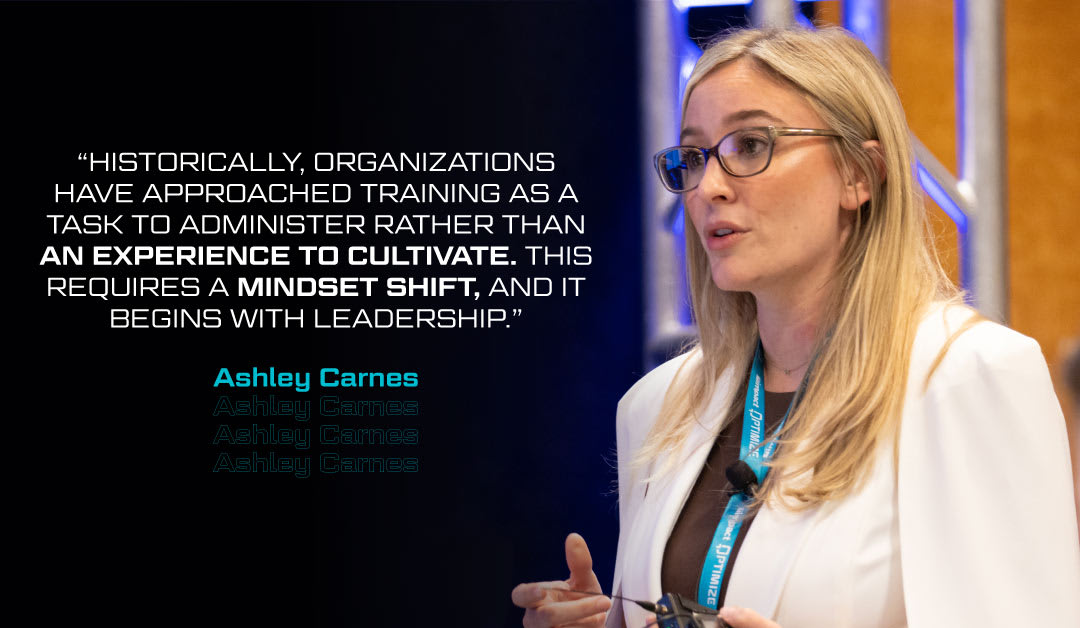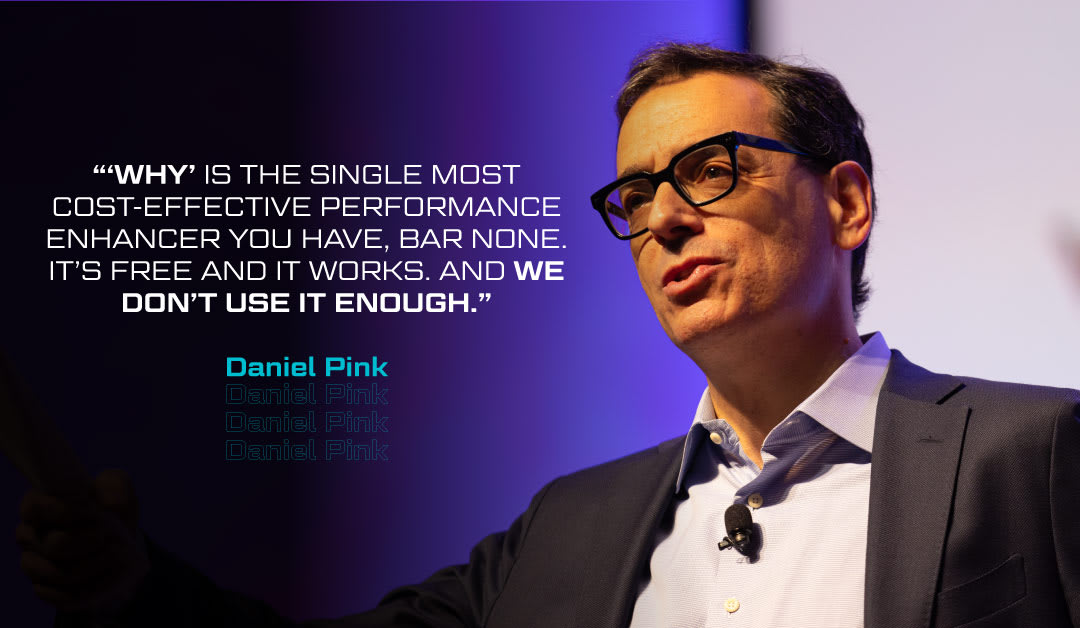Another successful edition of Impact Optimize, a business technology summit led by subject experts, took place in Chicago this summer. Business leaders and innovators attended Impact Optimize to hear from industry experts, learn about the latest business and technology trends, and to connect with one another.
Sessions delved into subjects such as digital evolution, marketing and brand growth, managing tech initiatives, and cybersecurity. With 20 sessions and three phenomenal keynote speakers, attendees discovered new ways to take their business into the future and to inspire their workforce.
This blog brings you some of the most popular takeaways from the sessions. With these 27 takeaways, grouped into the subject tracks of Impact Optimize, we hope to share some of the wisdom we gathered at the summit.
Managing Technology Initiatives
1. Surveys have shown that up to 67% of customers prefer some form of self-service over speaking to a representative. Self-service options included recorded product training, FAQ pages, and AI-powered chat.
2. Customers expect a single source of truth. Ensuring that your communications to them are clear and consistent will increase customer retention.
3. We are currently undergoing a “watershed moment” in workplace culture. Up to 94% of employees say they would stay longer at a company that invests in their learning.
Company leaders who encourage learning and development have increased retention rates. Innovation begins with workplace culture.
4. Defining goals can streamline a company’s digital transformation efforts. To launch an initiative, give it a name and delegate its champions, who will have autonomy to run the initiative.
Establish how this initiative will affect your customers. Finally, name what needs should be covered before beginning the initiative and set a clear deadline.
5. If a business has an established strategy and they are ready to innovate, technology can help them meet most goals, regardless of the challenge.
6. Augmented reality is the next step in customer service. With augmented reality, services could provide quick and easy remote support.
Marketing & Brand Growth
7. Prior to starting a marketing campaign, there are essential questions your team should ask. These include:
- What is the goal we are working towards?
- What is the current state of our marketing efforts?
- What have we learned from our previous campaigns?
- What are the obstacles preventing us from reaching our goal?
- What is our next step and what are its mandatories?
8. Marketing has traditionally taken the top half of the sales funnel with sales taking the bottom half. The current customer journey asks marketing to take the top five stages of the funnel: awareness, interest, consideration, intent, and evaluation.
The sales team should take over at the evaluation stage and into the purchase stage.
9. To execute successful marketing campaigns, you need to test and learn. Experimentation is a must. Progress is achieved through trying, repeating, and learning.
Cybersecurity & Compliance
10. Employee buy-in is a key component of strengthening a company’s cybersecurity. Ensure employees understand the goals of your cybersecurity programs. Also, create training that is engaging, fun, and gamified to increase buy-in.
11. Password standards are important to keep a company secure. Employees shouldn’t reuse personal passwords. It’s hard to hack into a company network. However, if an employee gets hacked, breaching the company becomes easier.
12. Bad employee passwords are a common cause of network breaches. The most common include a season; names and events, for example: Corona2020; the company name or address; and keyboard patterns, for example QWERTY.
To help employees maintain password hygiene, consider implementing a password manager.
13. 82% of network breaches involved the human element. For example, stolen credentials, phishing, or employee error led to breaches. Email is so far the preferred method of malicious actors.
14. Hackers can use social media to research victims of targeted phishing emails. For instance, they can send a victim an email from a fake car dealership alluding to their actual car model and make, making the recipient more likely to click on malicious links.
15. According to cybersecurity expert Wes Spencer, companies should “work from a perspective of adverse conditions.” He used the example of a bank that had been doing pandemic drills previous to the corona outbreak. They were more prepared than other banks to handle the pandemic.
16. “To be prepared for war is one of the most effectual means of preserving peace.” – George Washington. Spencer used this quote to illustrate the need for businesses to get prepared and stay prepared.
Sometimes companies get lax and this is when hackers strike.
Related Blog: 5 Ways to Facilitate Cybersecurity Training for Employees
17. It is crucial to build your cyber resilience, which is the measure of your business’ ability to continuously operate and deliver on your intended outcome despite adverse conditions, stresses, attacks, or compromises.
For this, you need information security, business continuity, and organizational resilience to be worked on jointly.
18. People are like water—they look for the path of least resistance. Employees are the same way, Spencer suggests. Without strong cybersecurity policies, employees are more likely to make an error which can cause a breach.
19. For MFA (multiple-factor authentication) to be effective, users should implement two of these three access barriers: passwords, bio-metric screening, and authenticating on an additional device.
Related Video: What Is the Definition of Multi-Factor Authentication? | Buzzwords
Digital Evolution
20. Developers can create an app for a business with the involvement of the business’ leaders. Using low-code and the agile method, efficient apps can be created faster that traditionally programmed apps.
21. The benefits of using the Agile method to create business apps include faster development, more communication with product owners and stakeholders, and increased value.
22. Businesses can use the Agile method to create digital innovation roadmaps. This method includes defining your initiative, delegating champions or leaders, having a specific goal, listing any needs to reach that goal, and establishing a deadline.
23. NFTs and their use are evolving at a fast pace. In the future, their uses will include proof of insurance or sale, digital credentials like vaccine or health cards, and employee wallets, according to Austin Barnard and Jeff Sekinger.
24. Web 3.0, the third generation of the evolution of web technologies, will include consuming, sharing, and owning information. Barnard and Sekinger explained that in the past, information was consumed and shared, but not generally owned by individuals.
Company Culture
25. To be able to innovate, leaders should put an emphasis on the “why” of work. Daniel Pink, one of the Impact Optimize keynote speakers, suggests that leaders have two less conversations about “how” to do things per week, and two more about “why” work is done.
For example, why do we serve our customers? Or why does a specific project matter in the context of the ones we serve? Thinking about the goal of an initiative can help employees stay engaged.
26. A starting premise for dealing with people is not to be demanding or uptight. Pink suggests assuming that everyone you’re dealing with has positive intent. If you assume positive intent, things will go much easier.
27. Establish progress rituals, Pink recommends. At the end of each day, list three ways you made progress. That way, you can see yourself getting better.
Final Thoughts
We hope these takeaways can inspire you to initiate conversations about different types of innovations for your business.
Use some of these takeaways as the catalyst to change your company culture and to motivate employees.
As you can see, the topics ranged from technology in business to human relations. The variety of insights audience members gained from the sessions at Impact Optimize is a testament to the success of the sessions run by our forward-thinking speakers.
Impact is full of these kinds of business and technology insights year-round, not just during Impact Optimize. Subscribe to our newsletter today to get them delivered directly to your inbox!


